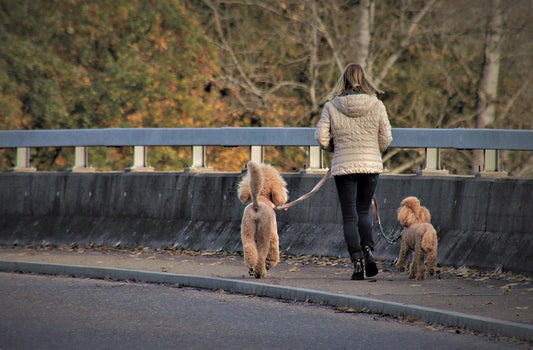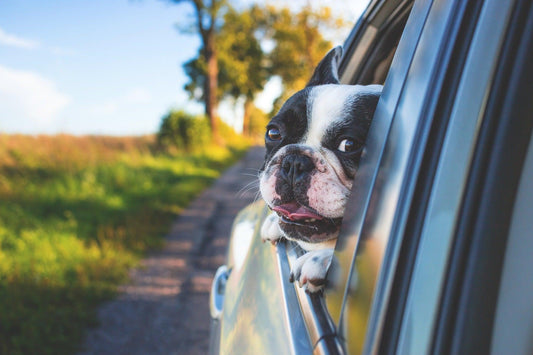Preparing for the move
Moving to a new home can be a stressful experience for both dogs and their owners. To make the transition as smooth as possible, it is important to properly prepare your dog for the move.
Create a safe place
Make sure your dog has a safe and familiar place in the new home. This can be a bench, a basket or a special corner, for example. Place his favorite toys, blankets, and pillows there to make him feel comfortable.
Practice with the new routine
Before you move, it is wise to let your dog get used to the new routine. For example, practice the new walking schedule and familiarize your dog with the new sounds and smells in the new home.
Reduce stress on moving day
Try to minimize your dog's stress on moving day by putting him somewhere he feels comfortable, such as with friends or family. This way he can get used to the changes without experiencing the hustle and bustle of the move.
The first days in the new house
The first days in a new home can be confusing and overwhelming for a dog. It's important to give your dog time to get used to and adjust to his new environment.
Give your dog time to explore
Let your dog explore the new home at his own pace. Guide him through all the rooms and give him time to sniff and get to know his new surroundings. In this way he learns that the new house is safe and familiar.
Stick to your normal routine
Try to stick to the routine your dog is used to as much as possible. This means walking, feeding and playing with him at the same times. Providing as much consistency as possible will make your dog more comfortable in the new home.
Give lots of love and attention
In the first days after the move, your dog can be a bit insecure. Therefore, give him extra love and attention. Cuddle, pet and play with your dog to reassure him and show that he is still safe and loved.
Dealing with behavioral problems
It is not uncommon for dogs to show temporary behavioral problems after a move. It is important to understand where these problems come from and how to deal with them.
Understand the causes
Behavioral problems such as barking, uncleanliness or anxiety can arise from stress and uncertainty after a move. Try to understand what is causing the behavior and take steps to reassure your dog.
Practice patience and positive reinforcement
Be patient with your dog and reward good behavior. Use positive reinforcement, such as tasty treats or praise, to let your dog know he's doing well. Avoid punishment, as that can only increase the stress.
Consider professional help
If your dog continues to have behavioral problems after the move, it may be advisable to seek the help of a professional dog trainer or behaviourist. They can help you find out the cause of the problem and find a suitable solution.
Explore the outdoor environment
In addition to getting used to the new home, it is also important that your dog gets to know the outdoor environment.
Get to know the neighbourhood
Go on a discovery tour in the new neighborhood with your dog. Walk different routes so that your dog becomes familiar with the environment. Also get to know the other dogs and dog owners in the area.
Teach your dog the boundaries
Teach your dog where the boundaries of your new garden or yard are. This is especially important if your dog is used to running free. Use clear commands and reward your dog if he stays within the boundaries.
Conclusion
Getting used to a new home can be a stressful experience for your dog. By properly preparing your dog for the move, being patient and loving, and helping him explore the new environment, he will soon feel at home in his new home.
Frequently Asked Questions
- How long will it take for my dog to get used to the new home? Every dog is different and it can vary how long it takes for your dog to feel comfortable in the new home. Some dogs adapt quickly, while others take longer. Be patient and support your dog throughout the process.
- My dog seems nervous and stressed in the new home, what can I do to help him? Provide a safe and familiar place in the new house, such as a crate or a special corner with his favorite things. Offer consistency in the daily routine and give your dog extra love and attention. Consider using dog pheromones, such as a vaporizer or collar, to help your dog relax.
- How can I best introduce my dog to the new neighbourhood? Go on a discovery tour in the new neighborhood with your dog. Walk different trails and visit parks so your dog becomes familiar with the area. Also introduce him to other dogs and dog owners in the area.
- My dog is showing unwanted behavior after the move, how can I handle this? Understand that behavioral problems often stem from stress and uncertainty following a move. Practice patience and use positive reinforcement to reward your dog for good behavior. If problems persist, consider seeking the help of a professional dog trainer or behaviorist.
- Is it necessary to get my dog used to the new house before we actually move? If possible, it's a good idea to get your dog used to the new home before moving. This can be done, for example, by taking him to the new house to explore the area and to get used to the smells and sounds. If this is not possible, at least make sure you are well prepared by practicing the new routine at home and by offering your dog a safe place in the new home.




